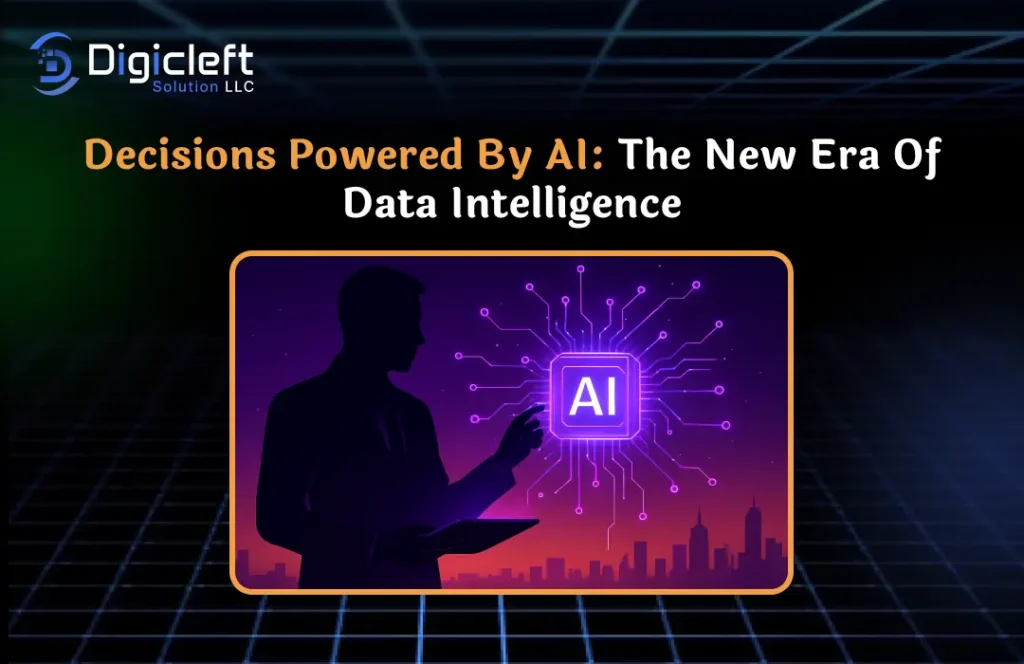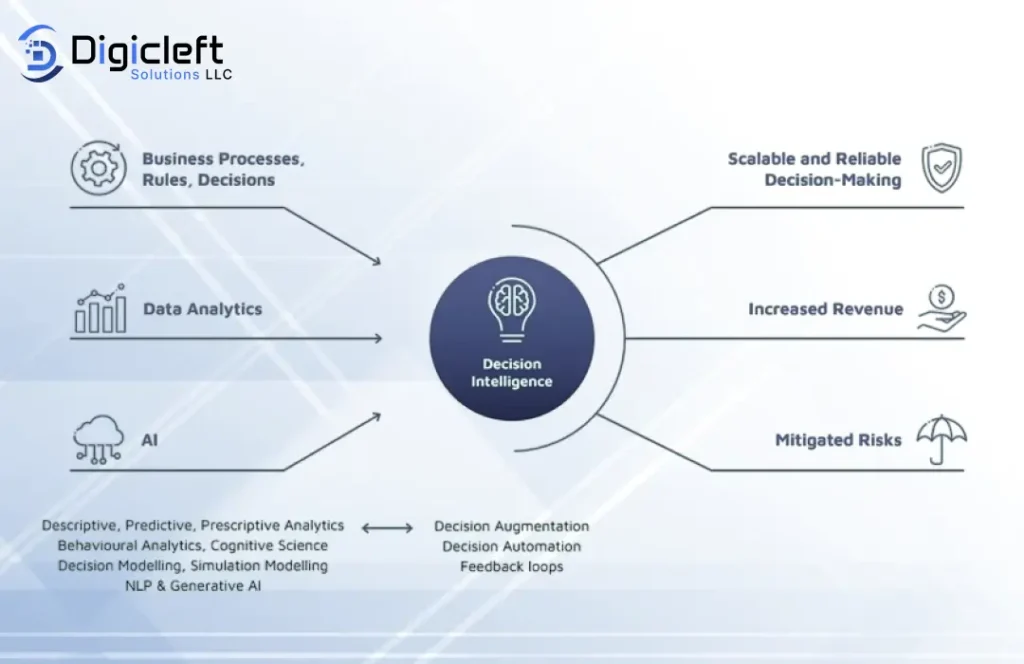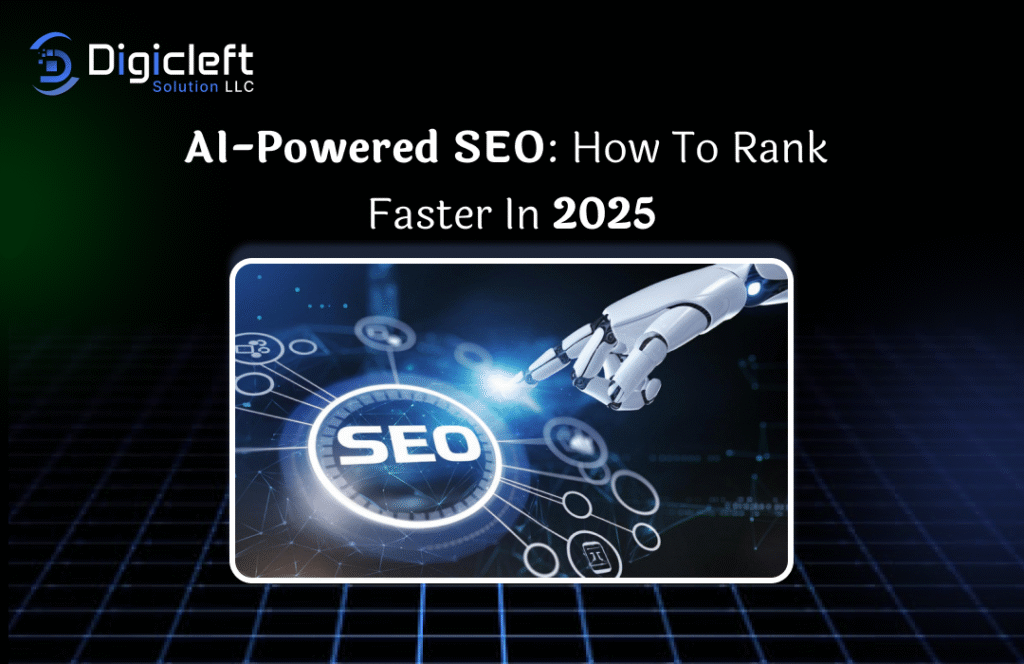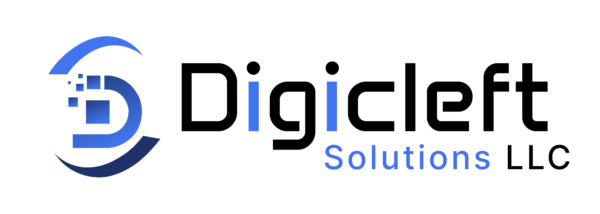
Welcome to a world where decisions aren’t just made they’re powered. Artificial Intelligence (AI) is no longer a futuristic buzzword; it’s here, reshaping how businesses, governments, and individuals make choices. We’ve entered the new era of data intelligence, where gut feelings are being supplemented and often outperformed by AI-driven insights.
Understanding AI-Powered Decisions
At its core, AI-powered decision-making is about using algorithms and machine learning models to analyze data, detect patterns, and recommend or even take actions.
Everyday examples:
- Netflix recommending your next binge-worthy show.
- Google Maps suggesting a faster route when traffic hits.
- Banks flagging suspicious transactions instantly.
The Role of Data in AI Decision-Making
Data is the fuel, and AI is the machine. Without high-quality data, AI is like a sports car with no gasoline — it goes nowhere.
- Raw data: Think of it as the uncut diamond.
- Analytics: The polishing process.
- AI: The final jewelry piece precious, actionable insight.
From Traditional to AI-Powered Decisions
Traditionally, decisions were based on experience, reports, and human judgment. While intuition has its place, it can’t process terabytes of information in real-time.
- Human decision: A doctor relies on experience to diagnose.
- AI decision: AI reviews millions of similar cases, symptoms, and research papers in seconds.
The difference? Precision and speed. Humans bring wisdom; AI brings data-driven accuracy.
Benefits of AI-Powered Decision Making
- Speed and Efficiency: AI makes lightning-fast computations that would take humans months.
- Accuracy and Predictive Power: AI doesn’t just explain the past; it forecasts the future.
- Personalization: AI tailors experiences at an individual level.

Key Industries Transformed by AI
- Healthcare: Diagnostics and medicine discovery.
- Finance: Fraud detection, stock predictions, and risk assessments.
- Retail & E-commerce: Personalized shopping journeys, inventory optimization.
- Manufacturing: Predictive maintenance to avoid costly breakdowns.
- Marketing: Smarter ad targeting, customer segmentation, and campaign optimization.
Real-World Applications
- Fraud detection: Banks use AI to stop fraud before it happens.
- Predictive maintenance: Airlines predict equipment failures to prevent breakdowns.
- Personalized recommendations: Amazon boosts sales through tailored suggestions.
- Autonomous systems: Self-driving cars make thousands of micro-decisions per second.
Challenges in AI-Driven Decision Making
- Data bias: Bad data in, bad decisions out.
- Ethics: Who’s responsible if AI makes a wrong call?
- Transparency: Many AI models are “black boxes.”
Balancing Human and AI Decisions
The best outcomes come from hybrid intelligence humans plus AI. Machines process data, humans provide context, ethics, and empathy.
Example: A chess grandmaster teaming up with AI. The human provides strategy, the AI crunches probabilities. Together, they’re unstoppable.
Tools and Technologies Driving AI Decisions
- Machine Learning: Teaches systems to improve with data.
- Natural Language Processing (NLP): Helps machines understand human language.
- Predictive Analytics: Uses trends to anticipate future outcomes.
Digicleft Solution and Its Role
One company making waves in this space is Digicleft Solution. Known for empowering businesses with AI-driven insights, Digicleft bridges the gap between raw data and meaningful decisions. Whether it’s enhancing customer experiences, streamlining operations, or boosting marketing ROI, their implementations prove that AI isn’t just for tech giants it’s accessible for businesses of all sizes.
Preparing Businesses for AI-Driven Decisions
- Build a data-first culture – Treat data as a valuable asset.
- Upskill employees – Train staff to work alongside AI tools.
- Choose the right AI tools – Select solutions that fit your goals.
The Future of AI-Powered Decisions

The future is exciting and a bit daunting. We’re heading towards:
- AI in strategic leadership: CEOs using AI dashboards for major business moves.
- Autonomous decision systems: From cars to smart factories.
- Global impact: Economies shaped by AI intelligence.
Myths About AI in Decision-Making
- Myth 1: AI will replace humans fully – Wrong. AI complements, not replaces.
- Myth 2: AI never makes mistakes – Wrong again. Garbage data leads to garbage decisions.
- Myth 3: AI is a black box forever – Transparency tools are evolving.
Conclusion
We’re living in a time when decisions are no longer just educated guesses they’re informed, optimized, and accelerated by AI. From personal choices to global business strategies, AI-powered decisions represent the dawn of a new era of data intelligence. As businesses adopt AI, the key will be balance blending machine precision with human judgment. Companies like Digicleft Solution prove that when done right, AI can be the game-changer every organization needs.
FAQs
1. What industries benefit most from AI-powered decisions?
Healthcare, finance, retail, manufacturing, and marketing are leading the way.
2. Can AI fully replace human decision-making?
No. AI complements humans by handling data-heavy tasks, but empathy and ethics remain human disciplines.
3. How does data quality impact AI decisions?
Significantly. Poor-quality data leads to inaccurate or biased decisions.
4. What are the risks of AI-powered decision systems?
Bias, lack of transparency, and ethical responsibility are major concerns.
5. How can small businesses adopt AI for decision-making?
Start small with affordable AI tools like chatbots, CRM insights, or marketing automation before scaling.


